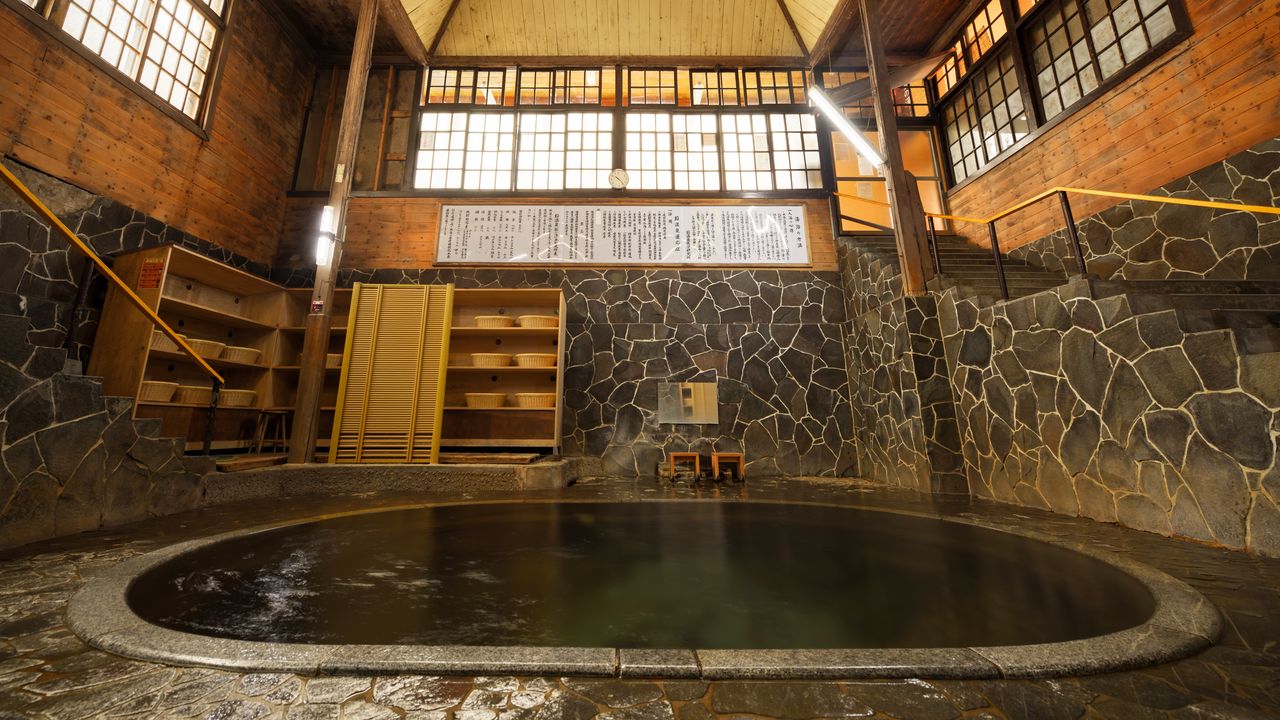
From One Hot Spring to Another in Iwate
Guideto Japan
Travel- English
- 日本語
- 简体字
- 繁體字
- Français
- Español
- العربية
- Русский
Testing the Waters
A half-hour of being shaken up on a shuttle bus from Shin-Hanamaki Station on the JR Tōhoku Shinkansen brings visitors to Hanamaki Onsen. This modern resort district is situated in the hot spring area of Hanamaki Onsenkyō, where hot springs are scattered over a wide area. It offers lodgings with extensive modern conveniences in the midst of a majestic mountain view.
The Hotel Senshūkaku, Hotel Hanamaki, and Hotel Kōyōkan stand from east to west across from the grounds of the Hanamaki Onsen Rose Garden. This vast park covers some 17,000 square meters all by itself. The hotel buildings are connected by walkways, allowing customers at any of the hotels to access all of their springs. Some 450 types of roses bloom year-round in the garden, which also sports a sundial flowerbed designed by the celebrated local author Miyazawa Kenji. A festival of roses takes place here during the prime viewing period from early June to early July.
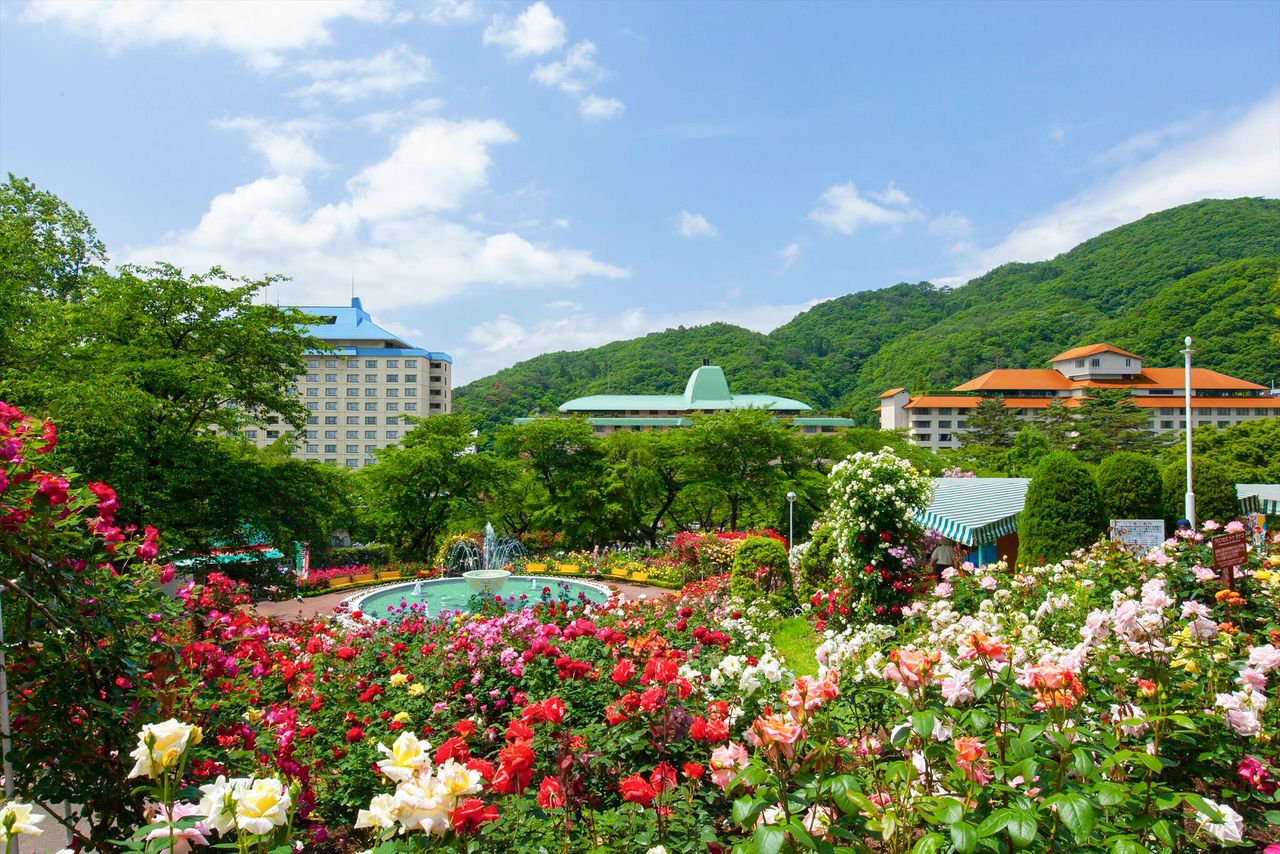
More than 6,000 rose bushes in 450 varieties are planted in the Hanamaki Onsen Rose Garden. From left: the hotels Senshūkaku, Hanamaki, and Kōyōkan. (Courtesy Hanamaki Onsen Co., Ltd.)
Senshūkaku is distinguished by its rose baths, which are for the exclusive use of female patrons. The fragrance of the roses floating in the hot spring water helps to ease fatigue and stress in no time. Another attraction is the ability to move among the main baths of the other hotels as one pleases: first to the outdoor baths of Hotel Hanamaki, which makes extensive use of Japanese cypress in its construction and offers spectacular vistas from its outdoor baths, and from there to Hotel Kōyōkan, with the rustic charm of its outdoor rock baths to luxuriate in.
Slightly removed from these big hotels is Kashōen. This relaxing bathhouse is popular for its Torotoro-no-yu (simmering water), said to be particularly good for the skin. Bathers can experience the waters to the full in both a main bath and an outdoor bath made from Japanese cypress.
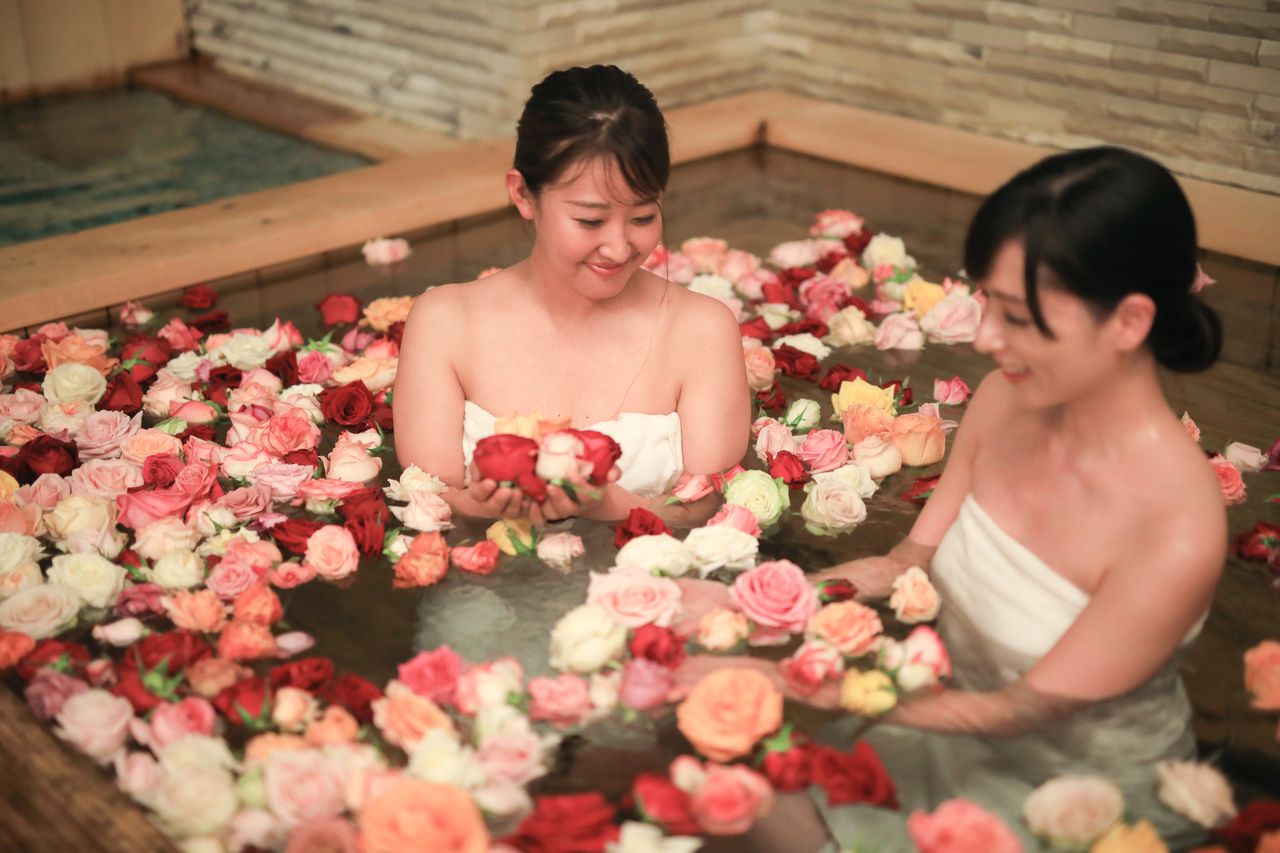
Bathers enjoy the relaxing fragrances of the brightly colored rose baths. (Courtesy Hanamakionsen Co., Ltd.)
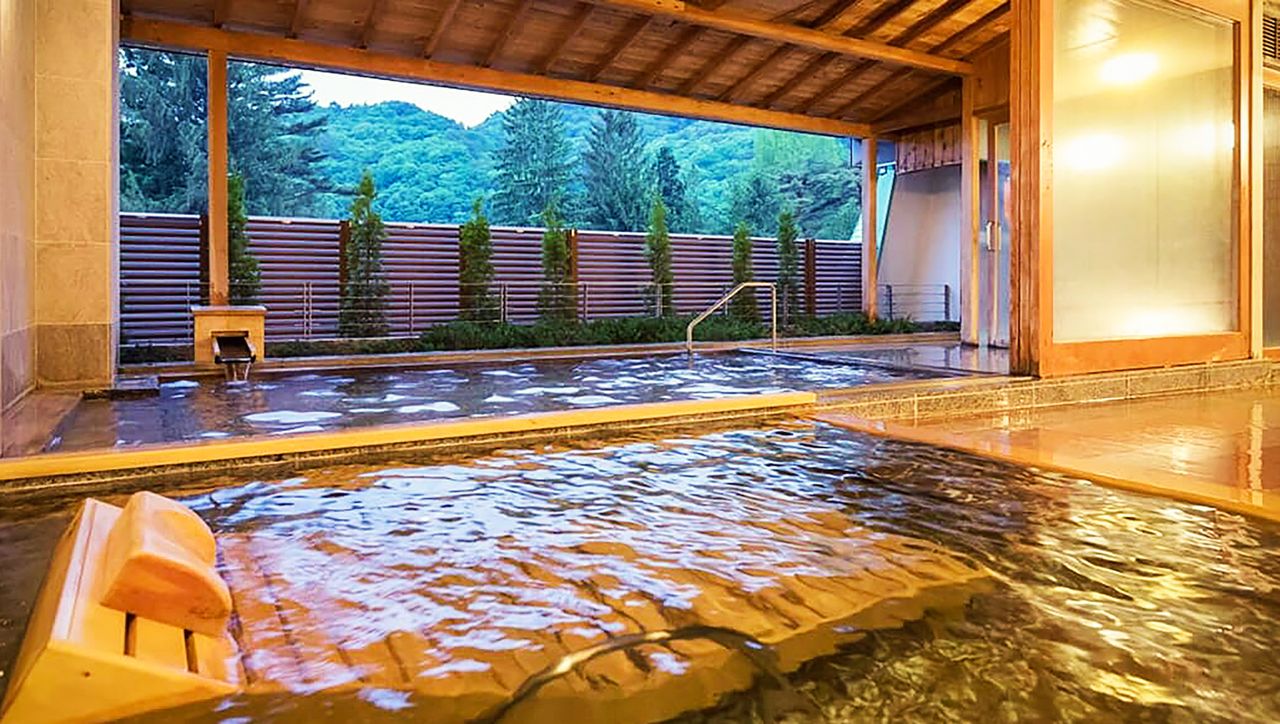
The Hotel Hanamaki is popular for the view from its outdoor baths made of Japanese cypress. (Courtesy Hanamakionsen Co., Ltd.)
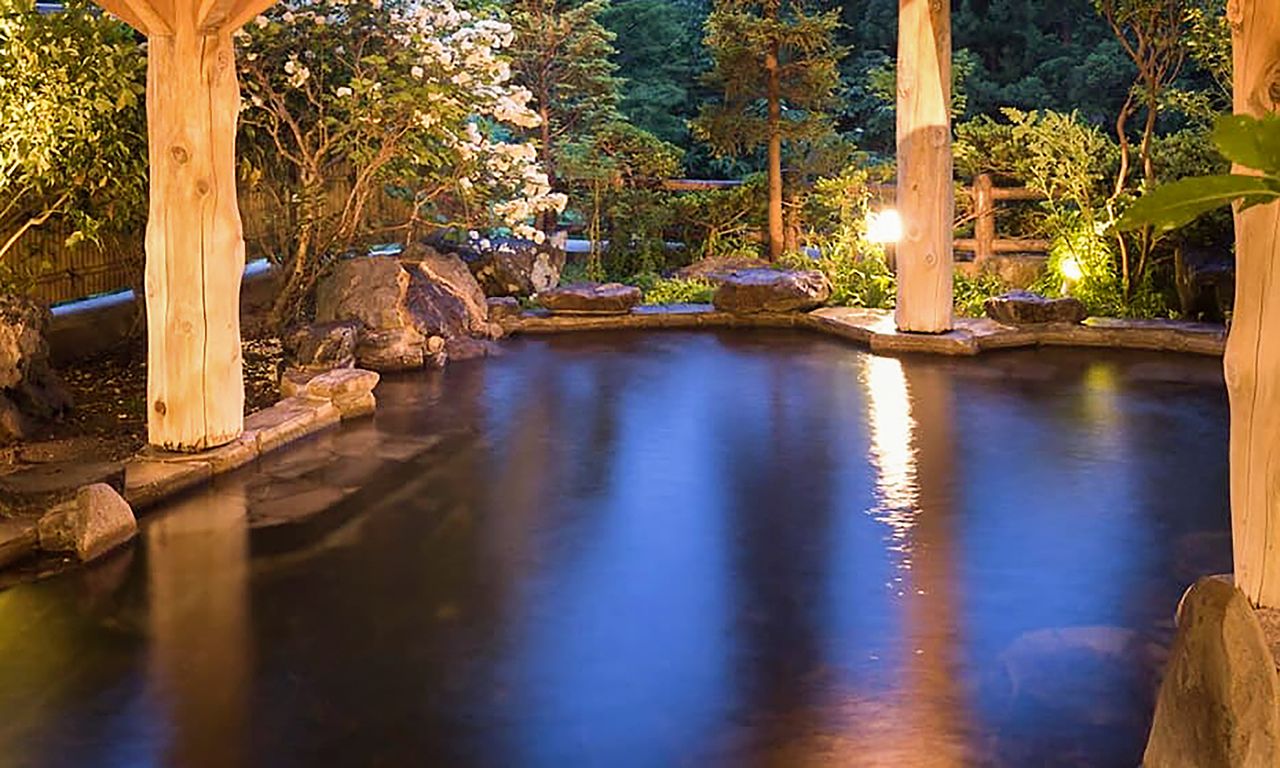
The outdoor bath at Hotel Kōyōkan is floodlit by night, lending it a surreal atmosphere. (Courtesy Hanamakionsen Co., Ltd.)
DATA
- Address: 1-125 Yumoto, Hanamaki, Iwate
- Access: 40 minutes from JR Shin-Hanamaki Station by shuttle bus
- Tel.: 0193-37-2111
- Website: https://www.hanamakionsen.co.jp/en/
- Multilingual Information: Website, pamphlets, and facility signage in English, simplified and traditional Chinese, Korean, and Thai.
Ōsawa Onsen, a Ravine Where Steam Rises
Reputed to have been discovered by Sakanoue no Tamuramaro, a general of the Heian period (794–1185), Ōsawa Onsen is also said to number among its customers Miyazawa Kenji and the poet and sculptor Takamura Kōtarō. Standing on the bank of the Toyosawa River, the structure, which appears to be a single inn, is actually three buildings on the inside, each with its own distinctive style. These are Sansuikaku, with a modernist Japanese-style construction, Kikusuikan, an extension with a thatched roof, and Tōjiya, originally built over 200 years ago. There are six baths in all, indoor and outdoor alike, and patrons are welcome to go from bath to bath, observing the clear, refreshing flowing stream as they do so.
Ōsawa-no-yu, the great outdoor bath at Tōjiya, has its baths close by the riverbank, filled with free-flowing water from the hot spring. While mixed bathing is the rule, the baths are also set aside for exclusive use by female patrons at scheduled times. The Kawabe-no-yu (riverside bath), a women’s outdoor bath, is also situated by the stream. The indoor Yakushi-no-yu (healing Buddha bath), with its old-fashioned tiled interiors, is popular with regular patrons. Tōjiya also offers a communal cooking area and laundromat, welcome options for patrons planning extended visits.
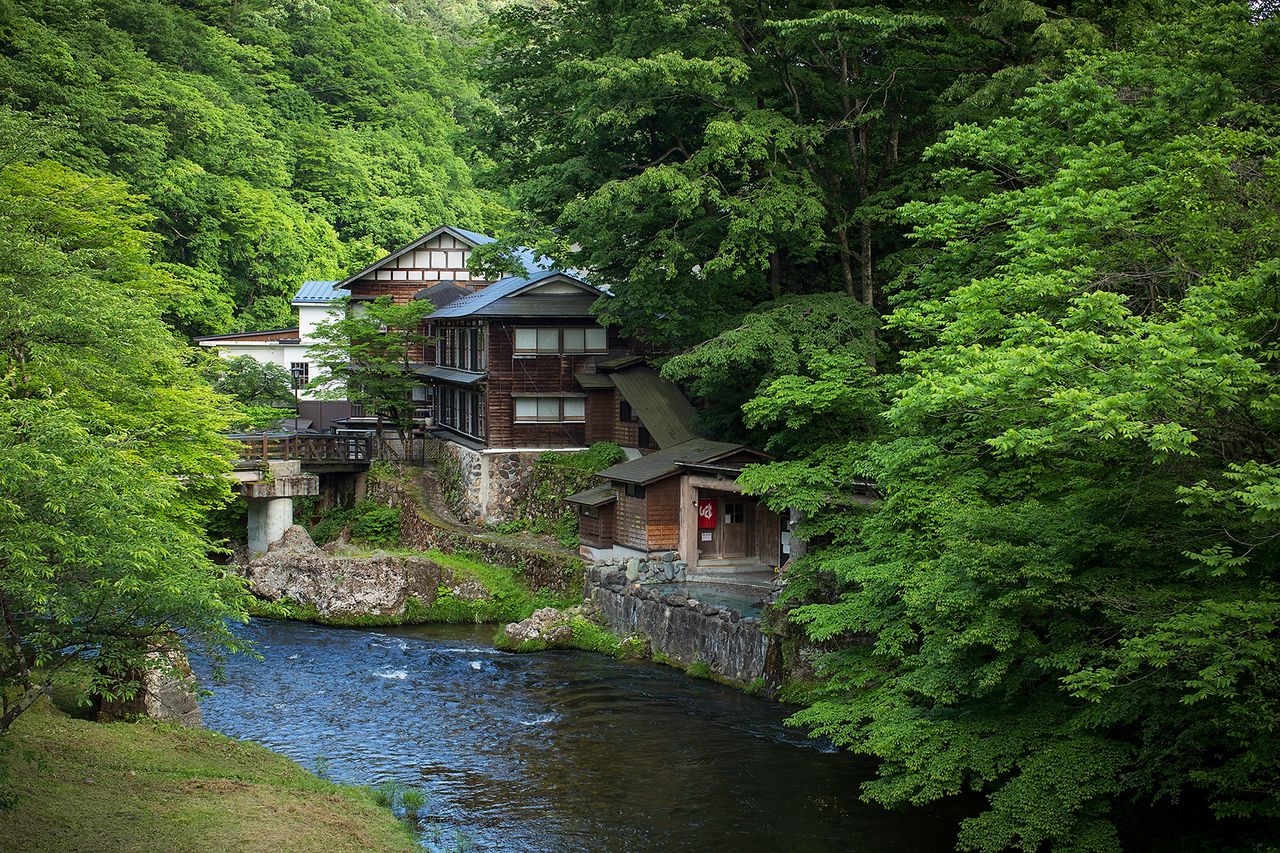
The Ōsawa-no-yu outdoor bath stands on the riverbank. (Courtesy Ōsawa Onsen)
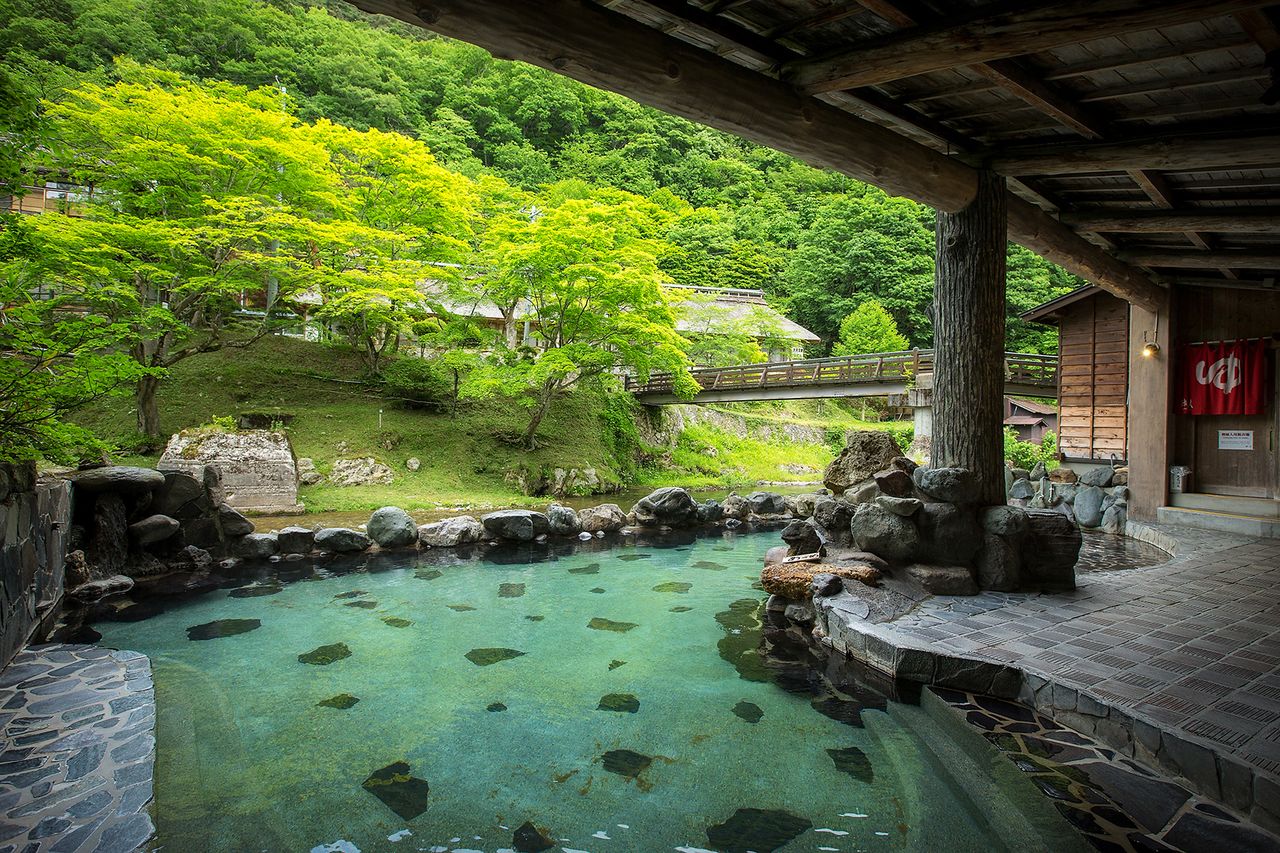 The naturally alkaline hot spring water has a moisturizing effect on skin. (Courtesy Ōsawa Onsen)
The naturally alkaline hot spring water has a moisturizing effect on skin. (Courtesy Ōsawa Onsen)
DATA
- Address: 181 Ōsawa, Yuguchi, Hanamaki, Iwate
- Access: 40 minutes from JR Shin-Hanamaki Station by free Hanamaki-Minamionsenkyō shuttle bus
- Tel.: 0198-25-2021
- Website: https://www.oosawaonsen.com
- Multilingual Information: Pamphlets and facility signage in English, simplified and traditional Chinese, and Korean.
Namari Onsen Fujisan Ryokan: Standing Stone Baths
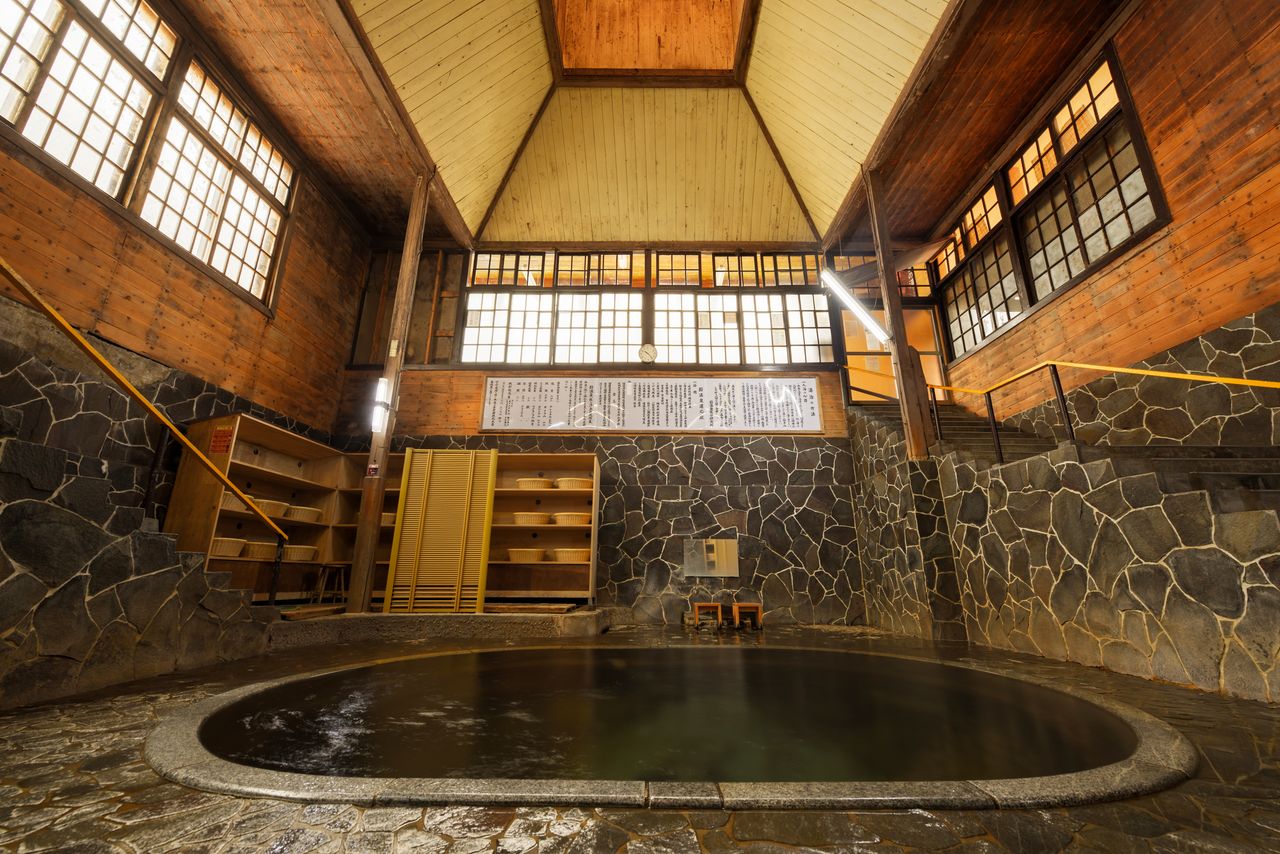
Although mixed bathing is the rule in these standing immersion baths, they are also set aside for exclusive use by female patrons at scheduled times. (Courtesy Namari Onsen Fujisan Ryokan)
Namari Onsen Fujisan Ryokan is a three-story wooden structure upstream from Ōsawa Onsen on the Toyosawa River. The story goes that these baths originated about 600 years ago, when the sight of a white-furred monkey soothing its wounds in natural hot spring water inspired the building of a bathing cabin on the site. The immersive standing bath that the spring is famous for is named Shirozaru-no-Yu (the white monkey bath) after this legend.
The spacious Shirozaru-no-Yu featyres a high ceiling and natural lighting during the day through large windows. The bath in the center of the chamber is dug out of the living rock to a depth of 1.25 meters. Standing immersion allows water pressure to act uniformly on a bather’s body, and is claimed to be particularly beneficial for the circulation. The spring water bubbles up naturally from the bottom of the baths.
Other facilities include outdoor baths by the stream, semi-enclosed outdoor baths with a waterfall view, and baths that can be reserved for private use. All of these allow onsen immersion while observing the natural splendor of the area. A bargain pass (¥800), usable both here and at Ōsawa Onsen, is available for day trippers, making it easy to go to two different hot springs on a single visit.
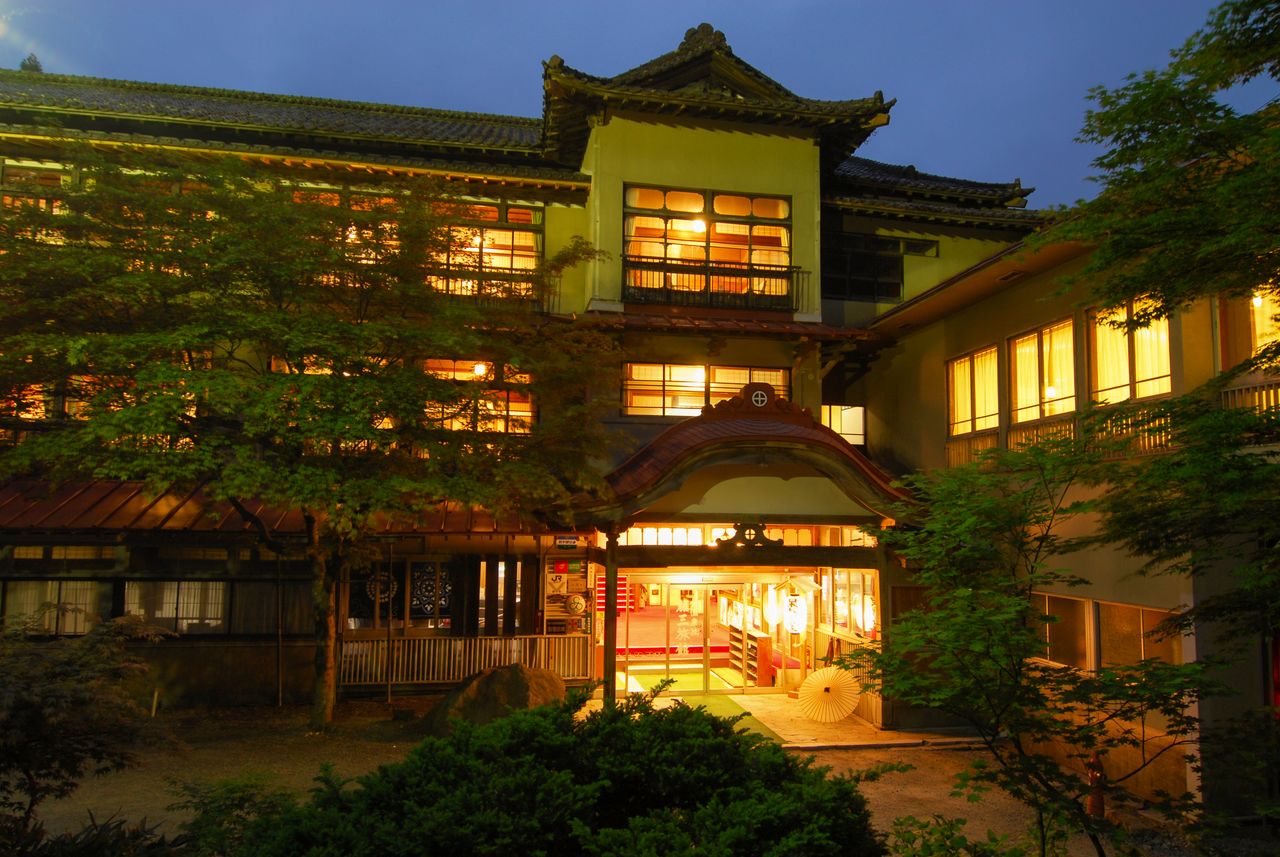
This wooden three-story ryokan is built in a luxurious Western style. (Courtesy of Namari Onsen Fujisan Ryokan)
DATA
- Address: 75-1 Nakahira, Namari, Hanamaki, Iwate
- Access: 1 hour 20 minutes from JR Shin-Hanamaki Station by free Hanamaki-Minami Onsenkyō shuttle bus
- Tel.: 0198-25-2311
- Website: https://www.namari-onsen.co.jp/index.html
- Multilingual Information: Pamphlets and facility signage in English, simplified and traditional Chinese, and Korean.
Nearby Attraction: Nanbu Sake Brewing Museum and Sakashōkan
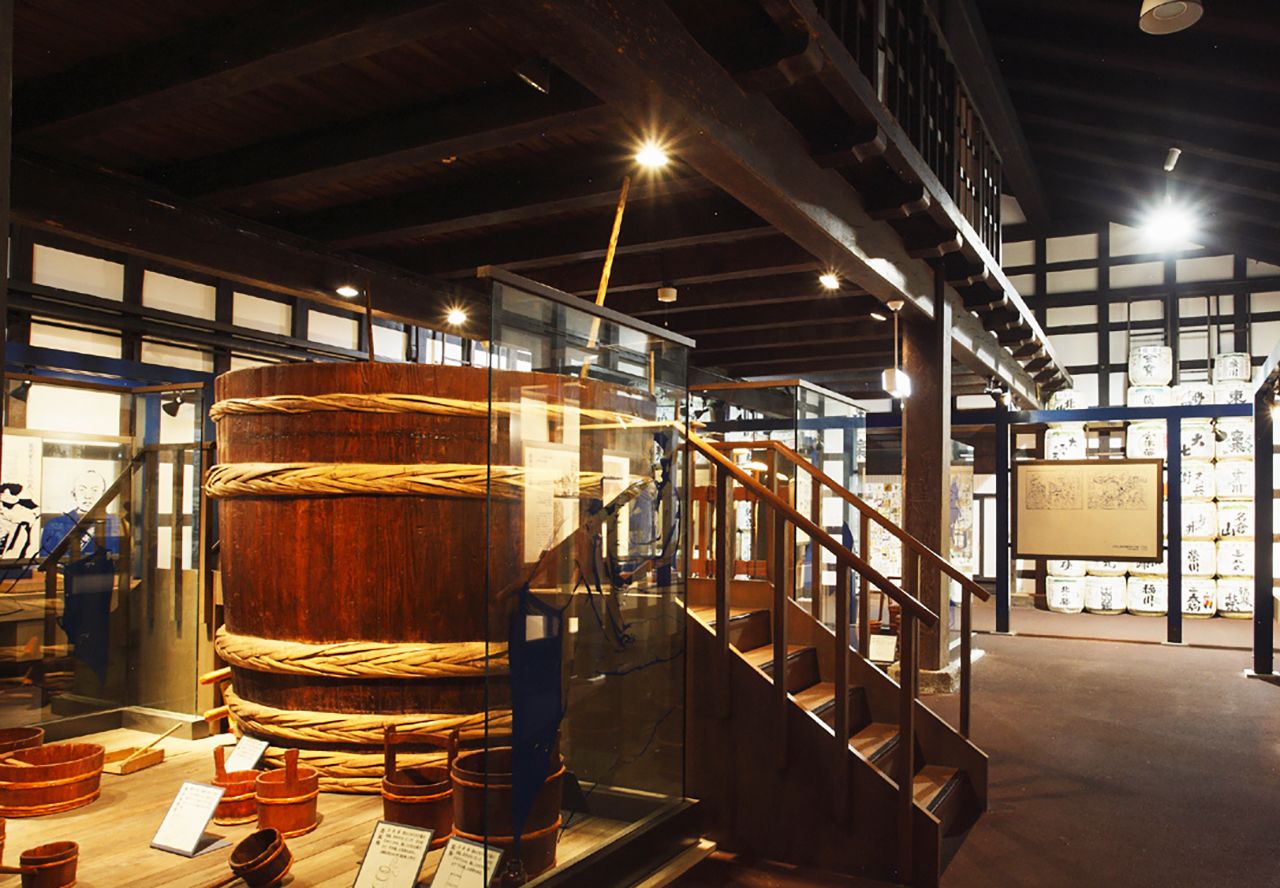
A brewing vat 2 meters in diameter dominates this museum display. (Courtesy of the Iwate Tourism Association)
The region spanning northern Iwate and eastern Aomori prefectures in present-day Japan was ruled in the Edo period (1603–1868) by the Nanbu clan. Accordingly, the people who maintain the traditional sake brewing techniques of the region are known as Nanbu tōji, or master sake brewers . The Ishidoriya area, in the north of Hanamaki, is known as the home ground of the Nanbu tōji, having once been the heartland of Nanbu-style sake brewing. The Nanbu Sake Brewing Museum, located at a local roadside service stop, features a restoration of one such traditional sake brewery. With fixtures on display such as gigantic brewing vats and drinking vessels of various periods, the museum gives visitors the chance to learn much about the history and techniques of the Nanbu tōji.
The adjacent Sakashōkan, a souvenir and gift shop, sells some 100 varieties of sake from Iwate and other parts of Japan, as well as local souvenirs and sake-flavored gelato unique to the locale. It also offers a corner for sake tasting. Those with a taste for Japan’s famous rice drink should not miss it.
DATA
- Address: Ishidoriya Roadside Station, 7-17-2 Nakaterabayashi, Ishidoriya, Hanamaki, Iwate
- Access: 5 minutes drive from JR Ishidoriya Station
- Tel.: 0198-45-6880
- Hours: 8:30 am to 4:30 pm
- Open year-round
- Admission: ¥400
- Multilingual Information: Museum facility signage in English, Chinese, and Korean.
(Originally published in Japanese. Reporting and text by Shoepress. Banner photo: Namari Onsen’s Shirozaru-no-Yu.)